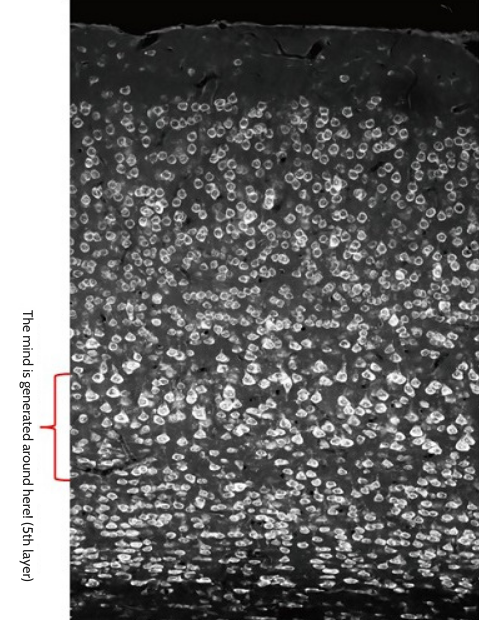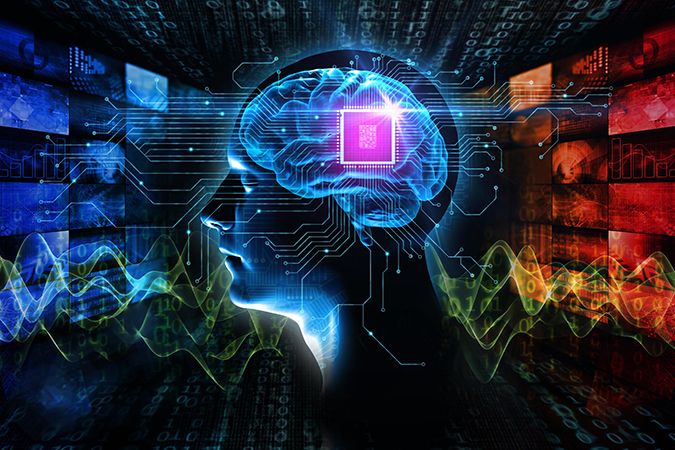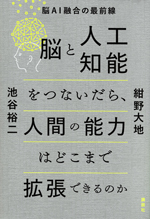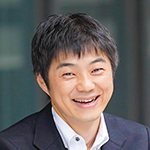Why does the mind arise from our brain?

An introduction to academia starting with “Why?”
After making a list of questions which would pique anyone’s interest, we asked faculty members on campus who might be knowledgeable in these areas to answer them from the perspective of their respective expertise. Let’s take a look into the world of research through questions that you feel you know something about, but cannot answer definitively when actually asked.
Q21. Why does the mind arise from our brain?
Our brain is composed of physical substances, but our mind seems to be something different from a physical object. How can the physical brain generate this thing called a mind?
The brain applies its own worldview to perceptions of the outside world
To be honest, this is a difficult question to answer. However, brain science has produced many insights relevant to it.
The essential difference between a brain and a computer is that a brain is spontaneously active. It is constantly in action, even in the absence of external information, and has a broad repertoire of activity patterns. The brain is always playing some part of its repertoire. When, for example, it receives information via the eyes on a vertically striped pattern, this becomes fixed within the brain’s repertoire as the pattern for vertical stripes. This is what it means when you “see” the pattern. Crucially, the brain has the same reaction when you are not looking at the pattern. The pattern is generated by the brain spontaneously, and we are not aware of it. So what’s the difference between brain activity that we’re aware of, and that which we’re not? Brain scientists are beginning to understand the answer to this question, which is closely related to questions of the mind.
The cerebral cortex, which is the outer layer encasing the brain, has a six-layer structure. It is the fifth layer, deep in the cortex, that holds the key. When the brain receives information on vertical stripes, the second layer reacts, then the fifth layer reacts; in the case of spontaneous activity, the fifth layer reacts first, then the second. The fifth layer is far larger in the human brain than in other animals’ brains. Thus, it appears that this fifth layer provides anatomical evidence of the richness of the human mind. Moreover, it’s been discovered recently that the fifth layer becomes disordered when a person is anesthetized. When the fifth layer is disordered, the person falls unconscious. So there is a variety of circumstantial evidence suggesting that this is where the mind resides.
Why do we have a mind in the first place? One important factor is probably our brain’s expansive repertoire. A mouse’s brain has only a small number of neurons, but in a human’s brain the neurons are far more numerous. The number of possible combinations is incomparably larger. The “integrated information theory” formulated by neuroscientist Giulio Tononi focuses on the number of connections between neurons and quantifies consciousness as the volume of integrated information. This theory proposes that our consciousness comprises the number of different states the neurons can adopt and that a necessary precondition for having consciousness is the possession of numerous different potentials: if the number is higher than a certain threshold, we can presume the existence of consciousness. This theory is congruent in many ways with the findings of brain science experiments performed since it was proposed.
We have a mind and feel surprise precisely because we have cognitive limits?!

https://www.jst.go.jp/erato/ikegaya/english.html
Our brains have limits to their cognitive capacity, but these limits can be transcended with the addition of AI. Using the added power of AI, we can access realms that would never have been accessible with the human brain alone. This has been demonstrated in experiments on mice. “Emergence,” in which unanticipated results arise from repeated performance of simple rules, is related to cognitive limits. Even where the laws of nature and mathematics tell us that the application of a rule will clearly lead to a certain result, humans can be surprised and impressed by the result because they cannot calculate it for themselves. Emergence is closely related to the mind. Emergence is not impressive: what’s impressive is our mind mistakenly perceives emergence. The fact that the mind can arise from a physical object, the brain, might itself be a form of emergence. We might simply be assuming that we have a mind, when in fact we don’t. But if the mind didn’t exist, neither would the question of how the mind can originate from the brain...
I believe that if we can overcome our cognitive limits, we’ll find an answer to this question, as well as many other truths, principles and laws that humans have been unable to comprehend thus far. That’s what motivates me to pursue projects on the integration of the brain and AI.

No to Jinko Chino wo Tsunaidara, Ningen no Noryoku wa Dokomade Kakucho Dekiru no ka (“How Far Can Human Abilities Be Extended by Connecting the Brain with Artificial Intelligence?”) (Kodansha, 2021)
Co-authored by Professor Ikegaya and Dr. Daichi Konno of The University of Tokyo Hospital. Presents a near-future scenario in which we can “remodel” the human brain by connecting it with AI.
* This article was originally printed in Tansei 45 (Japanese language only). All information in this article is as of September 2022.



 Answered by Yuji Ikegaya
Answered by Yuji Ikegaya


